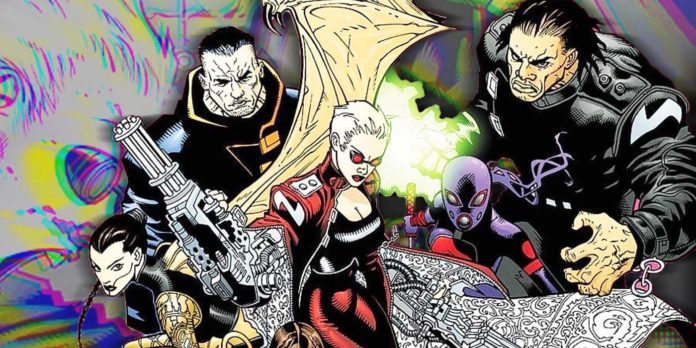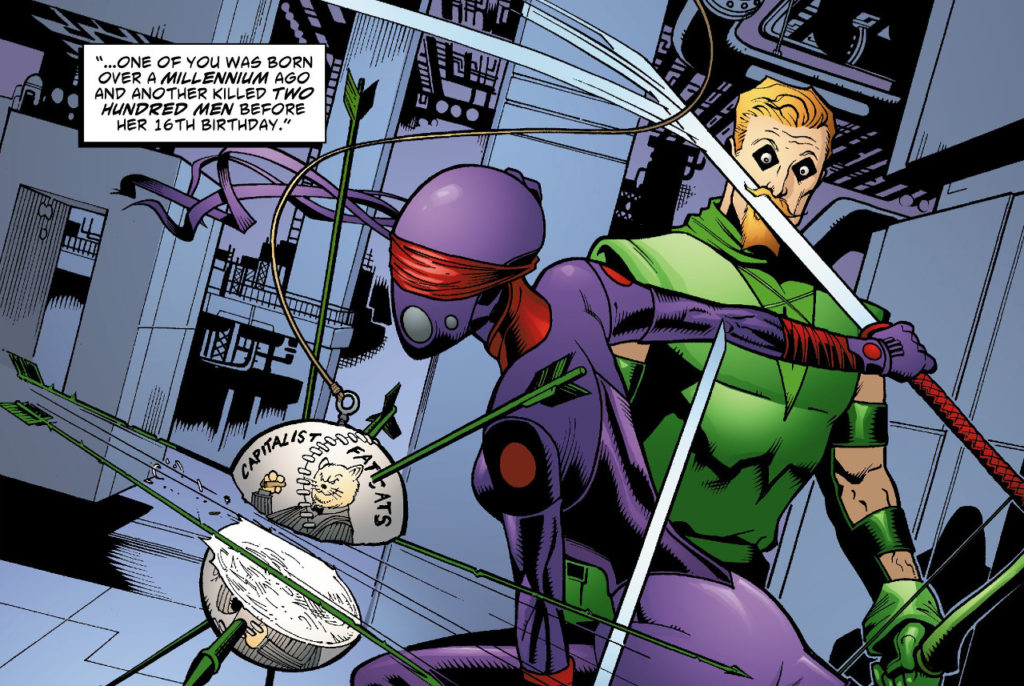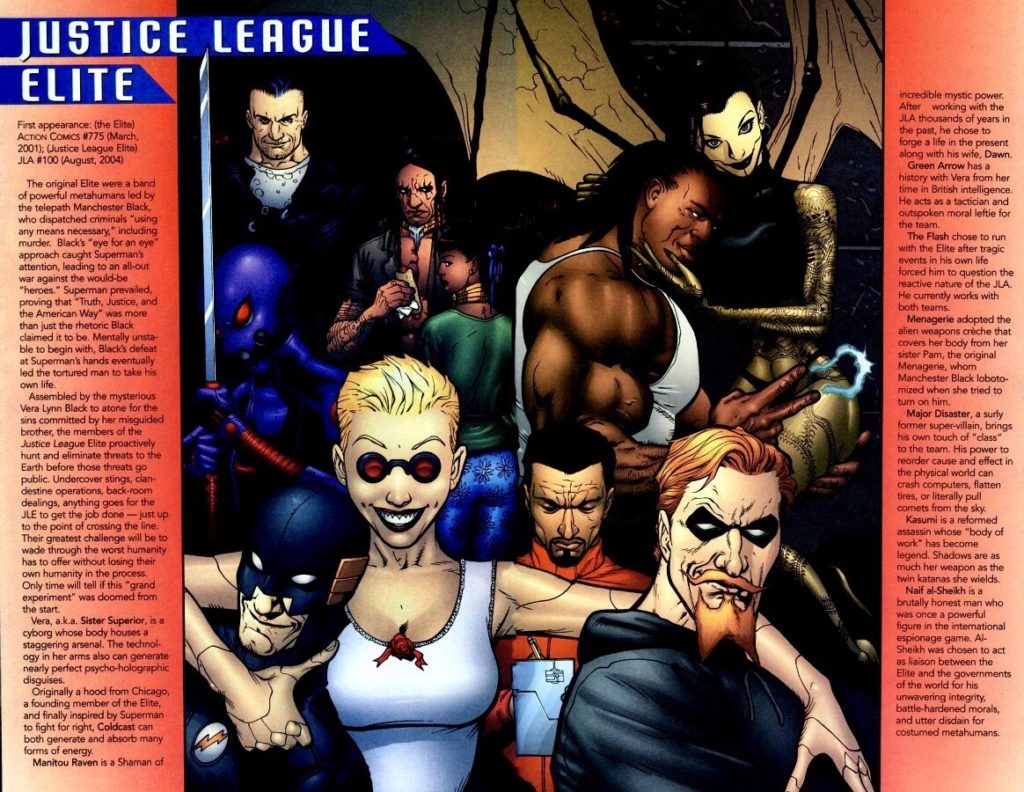In 2001, six months before 9/11, writer Joe Kelly and artists Doug Mahnke and Lee Bermejo released one of the best Superman stories of all time! Found in Action Comics #775, “What’s So Funny About Truth, Justice and the American Way?” spawned a 2012 DC animated movie, Superman vs. The Elite, a story arc on season four of the CW series Supergirl, and answered the question of how a goody-goody superhero like Superman is still relevant in a day and age when brutality, bullying, and death seem to equate to justice in many people’s eyes. That story introduced a gang of anti-heroes — led by the telepathic and telekinetic Manchester Black — called The Elite, who mete out their own kind of justice through extreme violence and executions. After realizing the negative effect The Elite are having on society, and seeing their attempt to execute an alien race, Superman implores them to stop but they attack him. Not only using his strength but also his wits, Supes defeats the team and all is well.
Three years later, The Elite return at the end of Kelly’s and Mahnke’s issue #100 of JLA. This new Elite is now led by Black’s sister, Sister Superior (Vera), who, in wanting to make up for her brother’s offenses, offers to assist the Justice League with world-class threats before they start. The team consists of the original Elite line-up, except for The Hat and some newcomers: Coldcast, Menagerie (sister of the former Menagerie from Action #775), Manitou Raven, Major Disaster, Kasumi, Naif al-Sheikh, and – to make sure they’re behaving – The Flash (Wally West) – his scarlet suit turned black – and Green Arrow. Just as Justice League Dark consists of heroes and anti-heroes to deal with threats of a magic-based or supernatural origin, Justice League Elite is a black-ops group consisting of known assassins and spies to infiltrate evil organizations as well as dark magicians and defeating them from within as well as eliminating extraordinary threats before they go public.
From JLA #100 sprung the title Justice League Elite, which only lasted twelve issues. Although the run was short-lived, Elite still stands up today against most contemporary comics from both DC and Marvel. Mahnke’s art is stellar and this is one of Kelly’s best plotted stories as it explores unknown characters, but greatly expanding on them in the DC mythology – a feat not too difficult for a writer who’s had plenty of experience writing anti-heroes in titles such as Deadpool and X-Men. Unfortunately, you may be hard pressed to find the two trade paperbacks in comic stores – and if you do, they may be discounted – but they both culminate into one of the best miniseries DC has released to date.
Not only does the title have plenty of action, but it also strongly features enough espionage scenes to basically make this the Mission: Impossible of Justice League teams. They don’t exist and, if caught, would be disavowed by the JLA. There are also many excellent side plots including a possible return of Manchester, a love triangle involving Green Arrow, run-ins with Deathstroke and the Justice Society of America, and plenty of twists to keep the reader guessing until the end. Even the infamous Source Wall – featured so prominently in the Rebirth era’s Justice League books – makes a significant appearance. One of the main villains is called Eve, a humanoid form of the Whorlogog from the Fourth World. So this pre-New 52 title still is relevant for today’s Rebirth reader.
Justice League Elite is the title you didn’t know you wanted, for those who enjoy Justice League Dark and Suicide Squad but want something just a bit darker. Not only did it establish these new anti-heroes into the main storylines of the League, but it also furthers Wally West’s issues after his confrontation with Reverse Flash (in The Flash storyline “Blitz” by Geoff Johns) with heroes and the League only reacting to crime rather than being proactive, as well as Oliver Queen’s involvement as a tactician but also sees the hero drawn to a woman who isn’t Black Canary. While the story never continued past its 12 issues, it is a wonderful story arc showing how everyone – even superheroes – has personal issues and how these people deal with those issues during extenuating circumstances and on missions. The characters fail or screw up quite a bit so there are no polished “Hollywood endings” here, leaving a bit more realism to the title, and adding a lot of depth to this limited run.
Sadly, there are a lot of limited runs and mini-series which should last longer – maybe even be granted a full run of issues – while there are regular ongoing series which make many readers scratch their heads, wondering how these titles are still running. If you’re tired of the usual superhero titles but still like dark stories set in the superhero world, Justice League Elite is for you. Not all members survive or come out of this unaffected by the end, but I nevertheless long for the day when DC will come to their senses and bring back the JL Elite.




